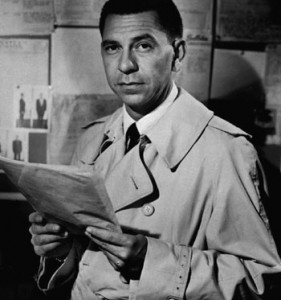“I’m the new Number Two.”
“Who is Number One?”
“You are Number Six.”
“I’m not a Number, I’m a Free Man!”
Most episodes of the 1967-68 series The Prisoner begin with this meeting between the hero of the series (Patrick McGoohan, who also created the series and wrote several episodes) and his antagonist of the week.
The Prisoner is about an unnamed British secret agent who abruptly resigns and returns home to pack for a trip to Bermuda and is gassed and wakes up in the Village. On its face, the Village is a pleasant, happy community set in a gorgeous environment. In reality, it’s a police state where everyone goes by numbers instead of names.
The organization that runs the Village wants to break Number Six and obtain the valuable information stored inside his head, beginning with an explanation for why he resigned. The Village is administered by Number Two, who also directs the Village’s campaign of psychological warfare against the Agent, designated by the Village as Number 6. Each week, there’s a different Number Two to serve as a foil for Number 6, although some Number Twos repeated.
Patrick McGoohan turns in a stunning performance at every turn, capturing the character’s default defiant mode, but also the reactions to all of the Village’s attempts to break him really make them believable.
The rest of the cast is generally solid, including the rotating Number 2. Each actor brings something different to the role, but my favorite is Leo McKern (who would star in Rumpole of the Bailey.) The penultimate episode, “Once Upon a Time” becomes a two-hander between McKern and McGoohan for almost the entire run time and it’s an acting tour de force.
The series has solid writing, but not all stories are episodes are created equal. McGoohan said he only wanted to do seven episodes of the Prisoner but the network (ITV) wanted more than that in the series. Thus, seven episodes would be considered essential and the rest merely filler. McGoohan didn’t specify which episodes were the essential ones. The popular fan theory is the first six episodes to be filmed plus the finale were all McGoohan wanted. However,there are other theories including the idea McGoohan didn’t want hour-long episodes at all, but seven ninety minute episodes, with each containing elements of two of our existing episodes.
Regardless, there are episodes rife with social commentary and deeper meanings and there are episodes that are little more than superb 1960s Spy programs littered with sci-fi content. The only episode I didn’t care for is, “Do Not Forsake Me All My Darling” which features Number 6 swapping minds with a man known as the Colonel and then being taken back to his life in London as the Colonel and is having to try and convince someone that he really is himself. The reason the story was written this way was so McGoohan could appear in just the opening and final scenes and therefore be able to take off from filming to go film the movie Ice Station Zebra. Creative decisions made for reasons like this rarely go well. The story isn’t horrible, it’s just a bit middling for a great series.
The production values on this series are superb. Visually, the series stands up better than anything I’ve seen from the 1960s. Portmeirion in North Wales was an absolutely fantastic location for most of the Prisoner’s location work. However, there’s a lot of real workmanship involved with every episode. In an age when many TV dramas were just point and shoot, there’s some deliberate choices made to frame shots to communicate the mood and add layers to the story.
The Western episode of The Prisoner, “Living in Harmony” was well-filmed and felt authentic in the setting, costuming, and most of the characters.
The Prisoner has other weird and wonderful touches such as inventing a new sport named Kosho in which Number 6 and his opponent bounced around on trampolines wearing kimonos, helmets, and boxing gloves while trying to knock each other into a pool. Then there’s the episode where the Prisoner showed that week’s Number Two doing some great martial arts moves…for no apparent reason.
Not everything weird that the Prisoner tries works. The ending, for example, was so controversial McGoohan had to go into hiding for several day after its airing. To this day, lots of people think it was a horrible way to end the series. However, its oddness and the questions it raises does fit the rest of the series, and fans overall give the episode an 8.1 out of 10 on IMDB.
The Prisoner is a television experience. It’s incredibly rewatchable, and not just because there are only seventeen episodes, but three alternate viewing orders have been recommended by various fans over the years to better enjoy the series. Overall, this is an unforgettable classic.
Rating: 4.75 out of 5
Currently, the series is available to watch for free for Amazing Prime subscribers.
If you enjoyed this post, you can have new posts about Detective stories and the golden age of radio and television delivered automatically to your Kindle.
This post contains affiliate links, which means that items purchased from these links may result in a commission being paid to the author of this post at no extra cost to the purchase

